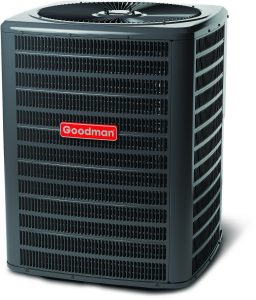This post follows a recent publication on the Constraints for the Installation of a Reversible Air-Conditioning System. Earlier we had a look at:
– Reversible air-conditioning installation: the building’s structure
– Refrigeration and heating production units
– Distribution and diffusion networks
– Reversible air-conditioning installation: the attached installations
– Fixed air conditioners and split units
We will now have a look at:
– Installation of a reversible air-conditioning system
– Split-system air conditioning installation tips
– Commissioning of an air-conditioning system
So, coming straight to it, only a specialist is able to guarantee, upstream, the right power through a preliminary heat balance, but also maintenance, troubleshooting, warranty, and after-sales service. These are all essential conditions for the comfortable, economical, and long-lasting operation of your air conditioning unit.
Important: single-package units do not require specialist commissioning, whereas split-system units require professional commissioning. All units are subject to a periodic leakage test, depending on the refrigerant charge.
Reversible air-conditioning system
The reversible air conditioning system provides both heating and cooling of the premises. The integrated installations, which are environmentally friendly and very economical to operate, can also provide domestic hot water. To find this type of product, you will need to contact a professional in air conditioning and heating.
The average price of an integrated installation for a 90 m² dwelling varies according to the type of heat pump and the heat-transfer fluid, installation included.
Examples of heat pumps:

– Mobile monobloc air conditioner;
– Stationary monoblock air conditioner;
– Mobile air conditioner, 2 separate units;
– Fixed air conditioner, 2 separate units (mono-Split);
– Bi-Split fixed air conditioner (2 indoor units);
– Fixed air conditioner, Tri-Split (3 indoor units);
– Fixed air conditioner, Quadri-Split (4 indoor units);
Split-system air conditioning installation tips
Important: The manufacturer’s recommendations
First, it is important to keep in mind that the manufacturer’s recommendations for installation must be followed. Some non-compliance with the recommendations may void the warranty, particularly concerning the shaping of the pipes.
When installing the outdoor and indoor units, check the recommendations regarding the space required around the units.
This point is essential because if it is too small, the air passage may be obstructed, which will reduce the performance of your units, or even cause them to fail.
Evacuation of condensates
The evacuation of condensates (condensation water from the air) requires special attention to avoid creating water infiltration in your walls or foundation for the outdoor unit.
This evacuation is made of plastic tube (crystal or corrugated) and must allow the condensation water to be evacuated by gravity: count at least 1 cm per meter of the slope.
If it is impossible to respect this rule, then you will have to opt for a forced evacuation solution by adding a lifting pump that allows the water to be brought up to the evacuation point.
Note: As a reminder, reversible air conditioners are not recommended in a bathroom, as blowing air may cause discomfort. An electric heater is preferable, here.
Inter-unit connections
To connect the units together, use refrigeration-grade copper tubing in coils to avoid having to extend the lengths.
At each end of the tubes, an expansion joint (conical flare of the copper tube) must be made to ensure a perfect seal between the unit connection and the tube.
Commissioning
During this commissioning, the professional should check:
– The correct connection of the units (electrical and fluidic) ;
– the correct connection of the expansion joints;
– the tightness of the unit;
– the emptiness of air present in the pipes (vacuum draft);
– that opening the valves of the outdoor unit contains refrigerant.
Depending on the length of the pipes, a top-up charge may be necessary. Finally, he will check that the system is working properly and will give you a commissioning sheet.
